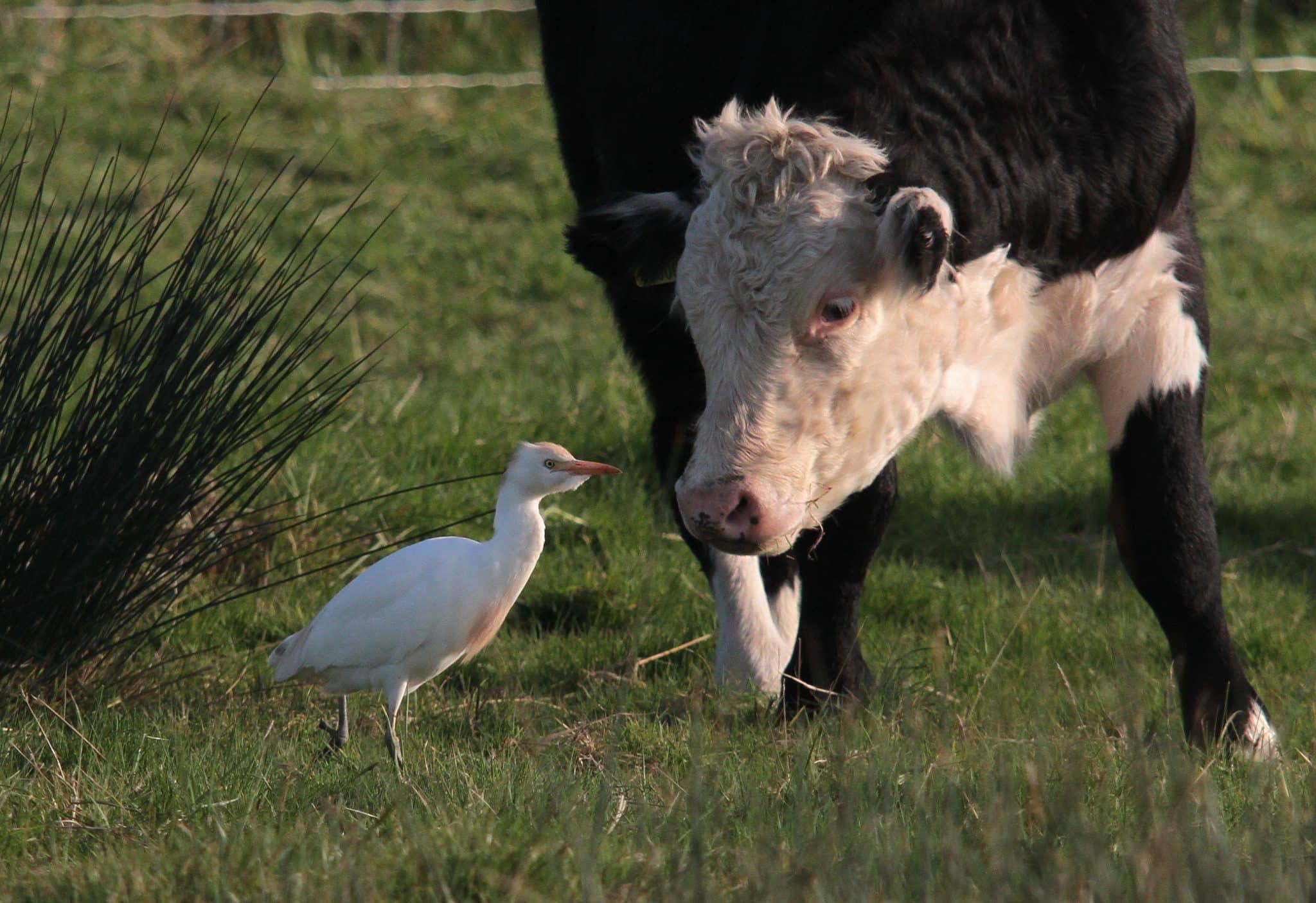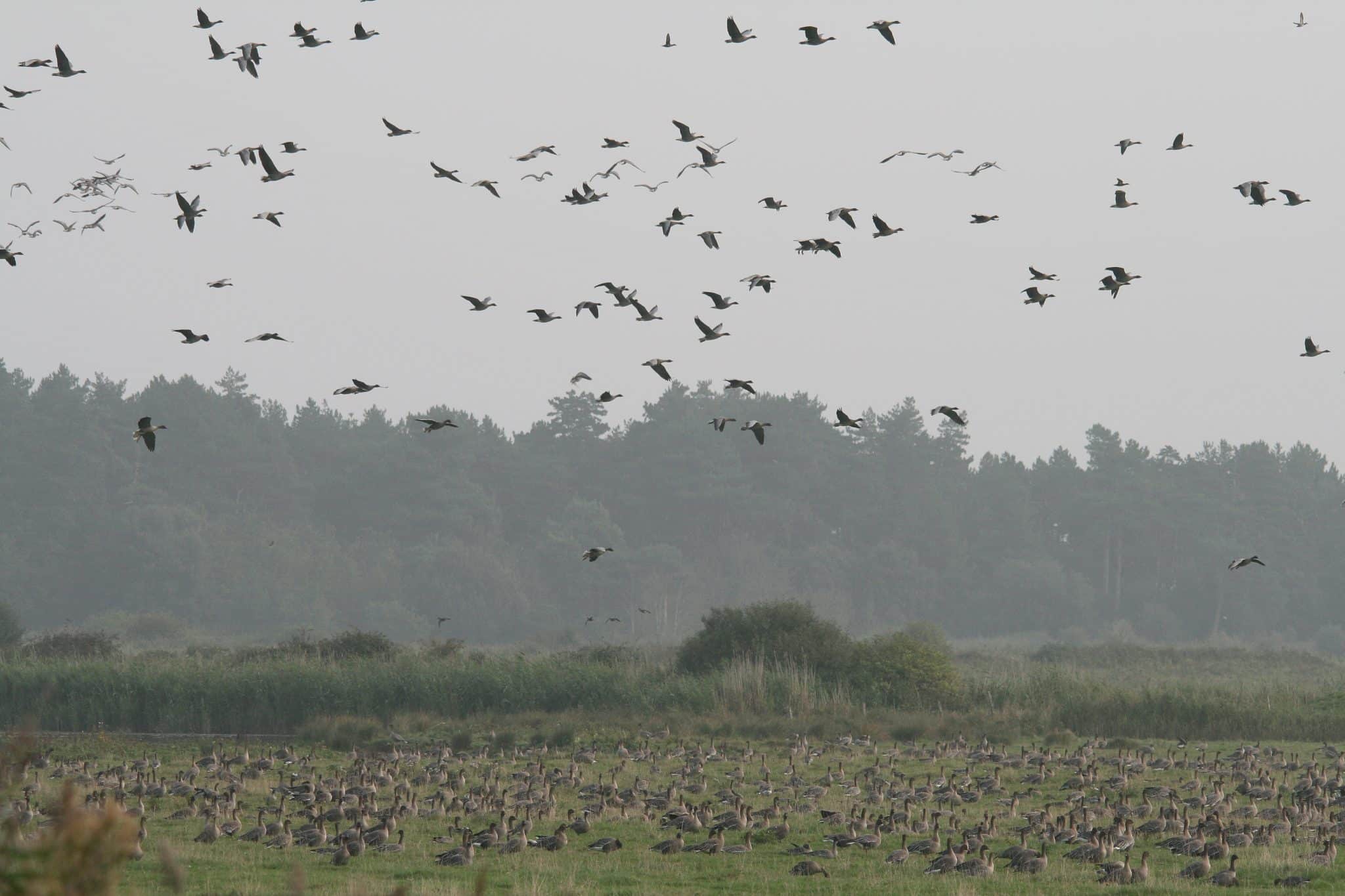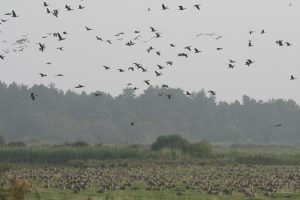
Holkham’s high flyers
December 2, 2024 | Nature news | 6 minute read
Restrictions to protect wildlife habitats on the Holkham National Nature Reserve helped nature to flourish during the Summer of 2024, with some unexpected arrivals.
With its complex landscape, the Holkham National Nature Reserve (NNR) is a magnet for nature lovers, particularly in Summer, when the population of breeding birds peaks.
It’s a delicate balancing act between people and nature, but measures to protect wildlife and improve the reserve are paying dividends with the NNR team reporting new species and increased breeding.

Cattle Egret – Andrew Bloomfield
Holkham’s General Manager of Conservation, Jake Fiennes, says there are winners and losers in nature, with climate change also playing a part in the changing landscape. “The natural world is about long-term trends. The aim is to maintain a wide variety of species,” says Jake. “For example, the number of butterflies, hoverflies and bumblebees has been lower than previous years, due to the wet weather. People talk about insect armageddon, yet swifts, swallows and house martins, which are invertebrate feeders, have had a successful year, so some of the species which are less obvious to us have an effect on others.”
“We’ve had a record year with cattle egrets on the reserve,” says NNR Warden Andrew Bloomfield. “They feed on toads and frogs in wetland areas, and grasshoppers and crickets later in the season. The egrets timed their nesting from July to coincide with this and we recorded 15 nests and 26 juvenile fledglings. Holkham saw Norfolk’s first successful egrets breed in 2020, but the population was decimated by cold weather in 2021. We’ve now seen it bounce back as a result of climate change.
“With the warmer weather in July, we also saw southern migrant hawker dragonflies and southern emerald damselflies, which form colonies in the pools on the reserve, and this points to climate change as they are species typically seen on the other side of the English Channel. The glossy ibis is a water-bird which nests in southern Europe, where it feeds on snails, but with shifting weather patterns and the work we’ve done to improve the wetlands we’ve seen one or two since April, and it’s a species we hope will nest here in the future.”

Common Terns – Andrew Bloomfield
New and improved
One positive change has been the introduction of signage and Beach Wardens to raise awareness of the Holkham Beach dogs-on-lead policy to protect shorebirds, in effect from 1st April to 31st August each year. “We want to thank responsible dog walkers for adhering to the seasonal restrictions to protect species,” says Jake. “The Beach Wardens are there to ensure everyone has an enjoyable experience and make visitors aware of the wildlife we live alongside.”
“Shoreline breeding birds can have a tough time, due to tidal and weather conditions which are beyond our control,” adds Andrew, “but by changing people’s mindset towards disturbance by dogs we can help species like little tern – this Summer we saw a record 58 nests in the bay.”
“If you look at changes we have made to manage the reserve over the past five years, it’s clear some species have benefited,” says Jake. “Cetti’s warbler, a resident bird which stays through Winter, was quite hard hit, but we have seen the population double with 64 territories this year. It’s a similar scene with stonechats, which nested here for the first time in 2002, and this year we’ve seen ten pairs due to milder Winters. Overall, we see species benefiting from our changing climate and new species turning up all the time as they find less favourable conditions further south. Some species are finding the changes problematic – for example, we have a healthy population of otters and this has an impact on duck species such as mallard, moorhen and little grebe.”

Otter
Winter warning
While footfall may be lighter on the reserve during Winter, the challenges to wildlife remain constant. “We have up to 200,000 birds overwintering on the reserve,” says Jake, “and, while there are no restrictions during Winter, we are part of an international fly-way where birds migrate along the east coast of England. Many feed along the shoreline, so we want people to be aware that it’s still an important time for them. Regardless of the time of year, keeping dogs under control will always have a positive knock-on benefit to species.”

Pink-footed Geese gather on the NNR during the winter months – Andrew Bloomfield
“There’s also the threat of fire,” adds Andrew. “We had several last Winter and anyone who spots one should call the Fire and Rescue Service and use ‘what3words’ to help them quickly locate and put it out. We are also coming up to the grey seal breeding season and, while Holkham and Wells are not breeding sites, pups can get washed up on the beach and walkers and their dogs should keep a distance as seals are territorial and can give a nasty bite.”
“Over the past six years, we’ve worked to make the wetland wetter and more dynamic, and we’ve seen a range of species respond positively, so now it’s about protecting and maintaining the landscape,” says Jake. “It’s a constant challenge and, as the way nature is supported by government incentives is changing, it’s important that sites like the NNR, which are of international importance, have the level of support that is recognised for the benefits they provide to people and nature.”
This article is taken from the Holkham Gazette (Autumn/Winter 2024), written and edited by Daska Davis. See the rest of the Gazette here.
Back to Journal Back to Journal



